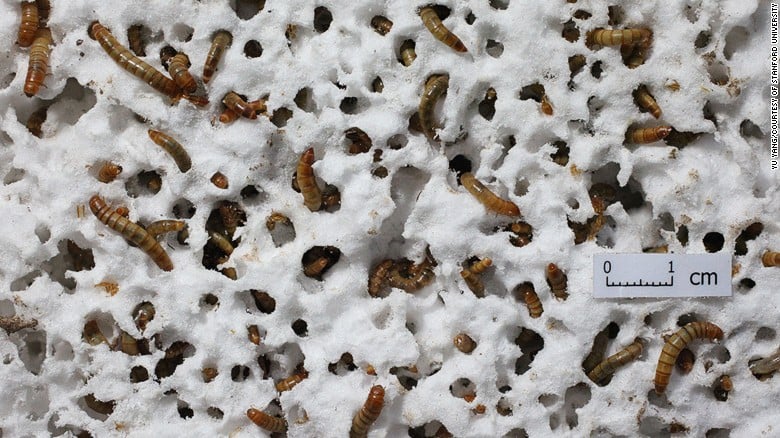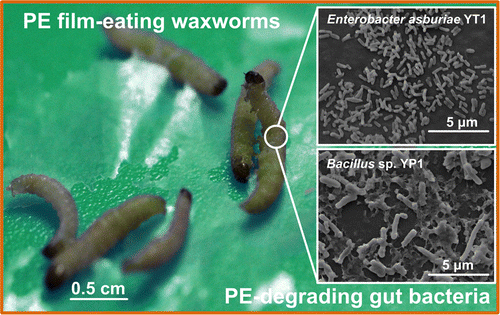
Styrofoam, a plastic made of expandable polystyrene foam (EPS) is a useful invention. In fact one could call it almost too useful! The lightweight and buoyant plastic can be used for a myriad of things from thermal insulation to disposable plates & cups, packing material, and even to build boats! The only problem is that the versatile product is almost impossible to recycle.
While many cities have resorted to banning single-use EPS products, millions of tons of Styrofoam still ends up in landfills each year. This creates a series of challenges from water contamination to the poisoning of marine animals.
Now scientists may have found an unlikely natural solution to rid the world of this dangerous plastic - mealworms! Turns out that tiny larval forms of the darkling beetle, that are popular as 'pets' and even consumed as a snack by some, have a penchant for Styrofoam.

This surprising revelation was made by a team of researchers from California's Stanford University and China's Beihang University. In the study that was published in the journal Environmental Science and Technology on September 30th, the scientists exposed 100 mealworms to Styrofoam. They observed that every 24 hours, each wriggly worm-like insect managed to eat its way through 34 - 39 milligrams (about the size of a pill) of the plastic.
What is even more exciting is that the worms were able to digest it as if they were eating their regular diet - Half was converted into carbon dioxide, and the other half became biodegradable waste that the researchers believe is safe to use as fertilizer! The scientists say the magical transformation can be attributed to certain microorganisms and bacteria present in the mealworm's gut.

Concerned about the worms? So were the scientists who conducted studies to ensure that the plastic-munching mealworms were just as healthy as their vegetable and grain eating counterparts. To ensure the environmental food chain will not be negatively impacted, the team also plans to perform similar studies on the small animals that consume the plastic-eating larvae.
Additionally, they will join forces with Stanford Professor Craig Criddle, to research if mealworms and other insects can help biodegrade additional hard-to-recycle human creations like polypropylene, that is used to manufacture automotive components and textiles. The scientists also hope to seek out the mealworm’s aquatic equivalent to help rid of the millions of tons of plastic floating around in our oceans.

This is not the first insect known to be able to digest plastic. Waxworms, which later evolve into Indian mealmoths, have the same talent when exposed to polyethylene, a plastic used in products such as trash bags. However, Wu considers this latest discovery, "One of the biggest breakthroughs in environmental science in the past 10 years." That's because Styrofoam has always been believed to be non-biodegradable and, therefore, considered very harmful to the environment.
So does this mean we will start to see armies of wriggling insects around plastic waste? Not really. What the scientists intend to do is conduct further studies to understand the conditions that are most conducive to plastic degradation and gain more insight into the enzymes that break down polymers. They will then use the information to artificially create even more powerful enzymes to help degrade the plastic.

Wu believes his team may have found a solution to the world's plastic pollution problem. However it does not mean we have to stop practicing the three R's - Reuse, Recycle and most importantly Reduce!
Resources: cnn.com, stanford.edu.